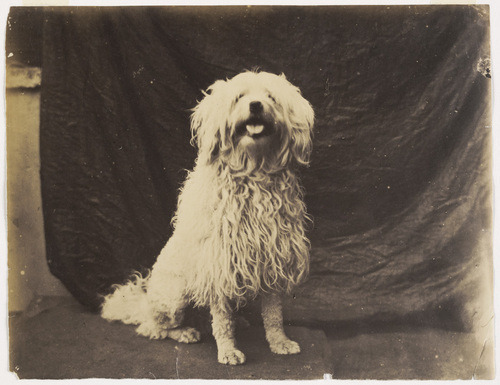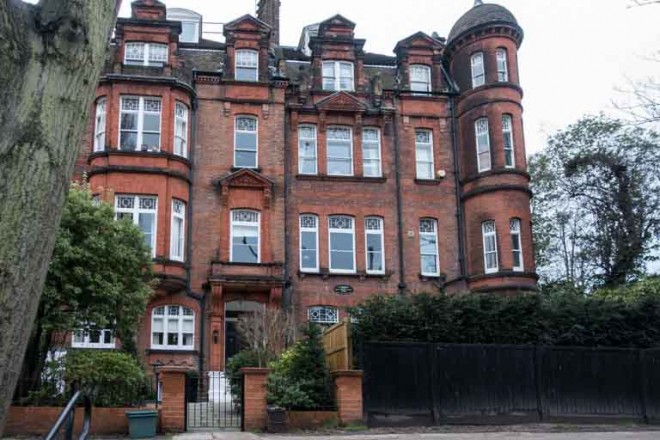
‘Our’ author Elizabeth von Arnim wrote a book about all the dogs she had owned called All the Dogs of my Life. It opens: ‘I would like, to begin with, to say that although parents, husbands, children, lovers, and friends are all very well, they are not dogs. In my day and turn having been each of the above – except that instead of husbands I was wives – I know what I am talking about, and am well acquainted with the ups and downs, the daily ups and downs, the sometimes hourly ones in the thin-skinned, which seem inevitably to accompany human loves. Dogs are free from these fluctuations. Once they love, they love steadily, unchangingly, till their last breath. That is how I like to be loved. Therefore I will write of dogs. Up to now I have had fourteen, but they weren’t spread over my life equally, and for years and years at a time I had none. This, when first I began considering my dogs, astonished me; I mean, that for years and years I had none. What was I about, I wondered, to allow myself to be dogless? How was it that there were such long periods during which I wasn’t making some good dog happy?” (It is now fourteen years since the last Persephone dog, Sasha, a Cavalier King Charles, died, and we can’t believe it has taken us so long to decide to get another dog!)

 Barbara Hepworth drew The Hands 1948 – although in 2020 it’s the masks we notice as much as the hands. The Hepworth in Wakefield writes
Barbara Hepworth drew The Hands 1948 – although in 2020 it’s the masks we notice as much as the hands. The Hepworth in Wakefield writes 










 E M Forster saw Hampstead as something he in some senses despised and in some senses envied. Of Maurice (the novel that was not published in his lifetime which he wrote in 1910-12) the late Peggy Jay, the ‘queen of Hampstead’, would write that his description of the ‘“Hampstead” family, particularly the daughters, are a mirror image of my own’. She was one of the children of the Garnett family, then living at 21 Well Walk, and for Forster it came to represent the paradigm of family life, the family life he would never have (because of his mother and because of his sexuality) and of Englishness. It was Peggy Jay’s aunt, Hilda Garnett, who inspired Adela Quested in Forster’s final novel A Passage to India. There are many parallels between the real Hilda and the fictional Adela, who, like Hilda, lived in Hampstead, ‘an artistic and thoughtful little suburb of London’ and is familiar with ‘advanced academic circles, deliberately free’.
E M Forster saw Hampstead as something he in some senses despised and in some senses envied. Of Maurice (the novel that was not published in his lifetime which he wrote in 1910-12) the late Peggy Jay, the ‘queen of Hampstead’, would write that his description of the ‘“Hampstead” family, particularly the daughters, are a mirror image of my own’. She was one of the children of the Garnett family, then living at 21 Well Walk, and for Forster it came to represent the paradigm of family life, the family life he would never have (because of his mother and because of his sexuality) and of Englishness. It was Peggy Jay’s aunt, Hilda Garnett, who inspired Adela Quested in Forster’s final novel A Passage to India. There are many parallels between the real Hilda and the fictional Adela, who, like Hilda, lived in Hampstead, ‘an artistic and thoughtful little suburb of London’ and is familiar with ‘advanced academic circles, deliberately free’.
 Elizabeth Jenkins bought number 8 Downshire Hill in 1939 and lived there for fifty years, before moving to a retirement home and living to the age of 104. She was the author of thirteen novels and thirteen biographies and some of them are among the most important books of the C20th – her biographies of Jane Austen and Elizabeth the First are outstanding and so are some of her novels, in particular The Tortoise and the Hare and Harriet. The former is about a QC married to the beautiful but passive Imogen who has to watch her husband being wrenched away from her by the appalling but strangely charismatic Blanche, while
Elizabeth Jenkins bought number 8 Downshire Hill in 1939 and lived there for fifty years, before moving to a retirement home and living to the age of 104. She was the author of thirteen novels and thirteen biographies and some of them are among the most important books of the C20th – her biographies of Jane Austen and Elizabeth the First are outstanding and so are some of her novels, in particular The Tortoise and the Hare and Harriet. The former is about a QC married to the beautiful but passive Imogen who has to watch her husband being wrenched away from her by the appalling but strangely charismatic Blanche, while